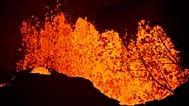By more accurately predicting the course of a cancer diagnosis, AI could mean shorter and less severe chemotherapy treatments.
Researchers have found a new artificial intelligence (AI) tool is better at predicting the outcome of breast cancer than expert pathologists - which could mean saving patients from unnecessary treatments.
The tool was able to identify breast cancer patients who are currently classed as high or intermediate risk, but who could go on to be long-term survivors.
By providing a more precise outlook on the future course of the patient’s disease, the AI tool could allow doctors to reduce the duration or intensity of chemotherapy treatments, which for many have harmful or unpleasant side effects, including nausea.
The study from Chicago’s Northwestern Medicine in the US looked into how an AI tool could be used for comprehensive evaluation of both cancerous and non-cancerous elements of invasive breast cancer.
Currently, pathologists only evaluate cancerous cells in a patient’s tissue to determine their course of treatment, but patterns of non-cancerous cells are also important in predicting outcomes.
Published in the journal Nature Medicine, it’s the first study to use AI for evaluation of both cancerous and benign elements in breast cancer.
“Our study demonstrates the importance of non-cancer components in determining a patient’s outcome,” said corresponding study author Lee Cooper, associate professor of pathology at Northwestern University Feinberg School of Medicine.
“The importance of these elements was known from biological studies, but this knowledge has not been effectively translated to clinical use”.
Using AI for a more accurate risk estimate
Female breast cancer is the most commonly diagnosed cancer in Europe, with more than 355,000 women in the EU estimated to have been given the diagnosis in 2020. That was 13.3 per cent of all cancer diagnoses.
Many patients are put on a course of chemotherapy, but with the higher precision risk estimates possible thanks to AI, fewer women may have to go through it.
Currently, a pathologist will review cancerous tissue to determine the look of the abnormal tissue, and based on the appearance of the tissue they will determine what treatment to prescribe.
However, many studies of breast cancer biology have shown that non-cancerous cells can play a role in sustaining or inhibiting cancer cell growth.
Cooper worked with colleagues to build an AI model that evaluates breast cancer tissue from digital images, measuring the appearance of both cancerous and non-cancerous cells, as well as interactions between them.
“These patterns are challenging for a pathologist to evaluate as they can be difficult for the human eye to categorise reliably,” said Cooper.
“The AI model measures these patterns and presents information to the pathologist in a way that makes the AI decision-making process clear to the pathologist”.
The tool looks at 26 properties of a patient’s breast tissue to generate a prognostic score, while also generating individual scores for the cancer, immune, and stromal cells to explain the overall score.
This information can then be used in creating individualised treatment plans, thanks to more accurate risk estimates.
The researchers trained the AI model with hundreds of thousands of human-generated annotations of cells and tissue structures within digital images of tissue samples from patients.
This data was collected over the course of a number of years.


















